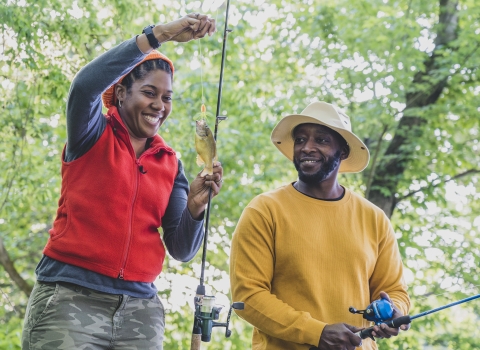As we near the end of summer, I, and I imagine, many of you, have been enjoying the fruits (and vegetables) of pollinators’ labor. Peaches, tomatoes, cucumbers, and many more. It’s more than food, though. I sometimes find myself charmed by the bumble bees in my garden as they flit from blossom to blossom. But they and other pollinators are in trouble, and in some ways, pollinators are among the more confusing of imperiled species.
It’s not because of the reasons their populations are struggling – those are achingly too familiar for conservationists: loss of habitat, invasive species invasive species
An invasive species is any plant or animal that has spread or been introduced into a new area where they are, or could, cause harm to the environment, economy, or human, animal, or plant health. Their unwelcome presence can destroy ecosystems and cost millions of dollars.
Learn more about invasive species , disease, and of course climate charge, among others.
What confuses many of us is how pollinators got to this embattled state to begin with. As of April 2023, the U.S. Fish and Wildlife Service has protected more than 75 species of pollinators under the Endangered Species Act, and countless others are at risk of needing ESA’s protections.
The value of pollinators to the economy and food production is staggering. A National Science Foundation-funded team found that the economic value of insect pollination in the United States was $34 billion in 2012. The U.S. Department of Agriculture says one out of every three bites of food we eat owes its production at least in part to pollinators.
Their ecological benefit is no less stunning, and in this category, we find a most interesting fact. Pollinators are very much threatened by the changing climate, but they also indirectly influence climate change climate change
Climate change includes both global warming driven by human-induced emissions of greenhouse gases and the resulting large-scale shifts in weather patterns. Though there have been previous periods of climatic change, since the mid-20th century humans have had an unprecedented impact on Earth's climate system and caused change on a global scale.
Learn more about climate change for the better.
Climate change is so hard on pollinators, as Mara Koenig explains. They have evolved with the plants they rely on, so the right pollinator appears when its needed plant is blooming. Climate change can throw this timeless ritual off, causing the plant to bloom early or late and miss the pollinator. This can devastate the pollinator species, to say nothing of the plant.
Dawn Marsh explains that this syncing issue is one reason why the Karner blue butterfly in such danger.
The way pollinators can fight climate change is related to the plants and habitats they need. But people play a crucial role, too.
Katie Steiger-Meister and Bridget Macdonald explain in the story Save Pollinators, Save the Planet. Essentially, the native plants pollinators need have strong root systems. Those roots are hard at work underground, helping prevent flooding, erosion, and other problems often associated with severe weather. Similarly, pollinator gardens or pollinator habitat provide for storage of carbon underground, keeping carbon dioxide out of the atmosphere.
This issue of Fish & Wildlife News features more stories on helping pollinators – what we are doing and how you can help. Our world, and the food we eat, depends on it.




